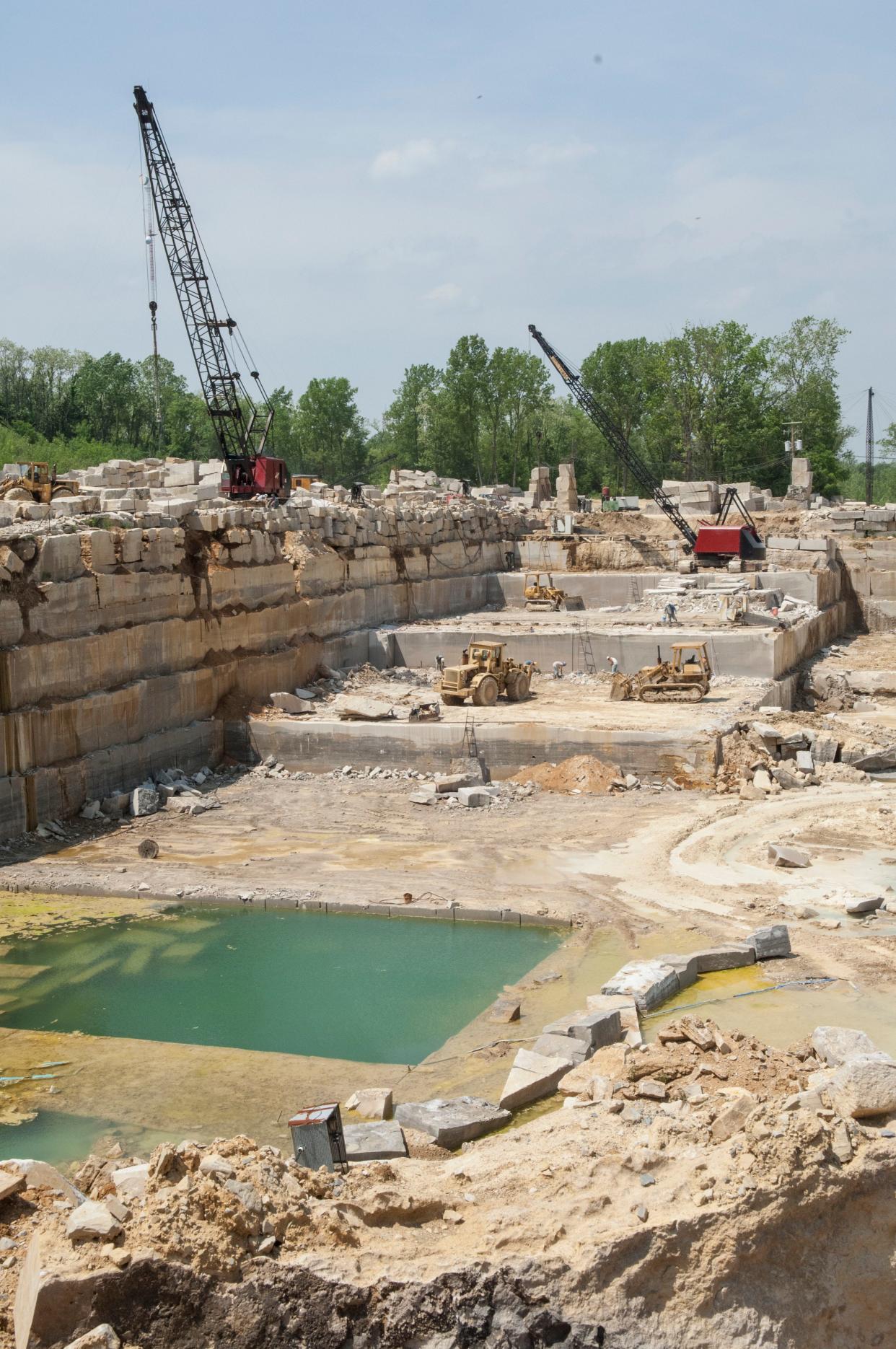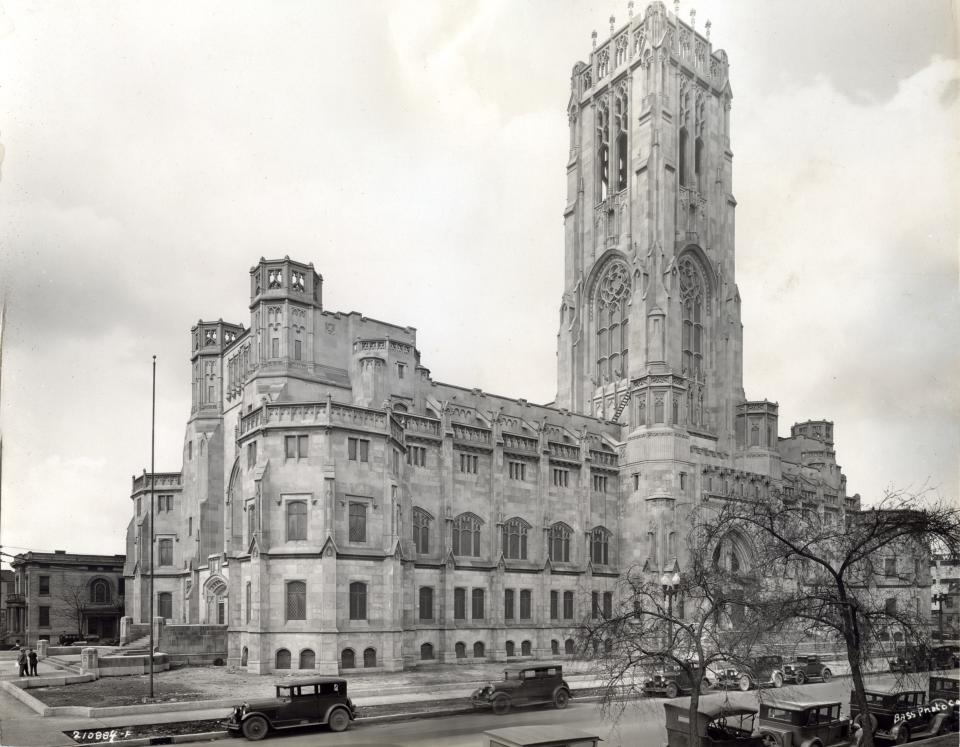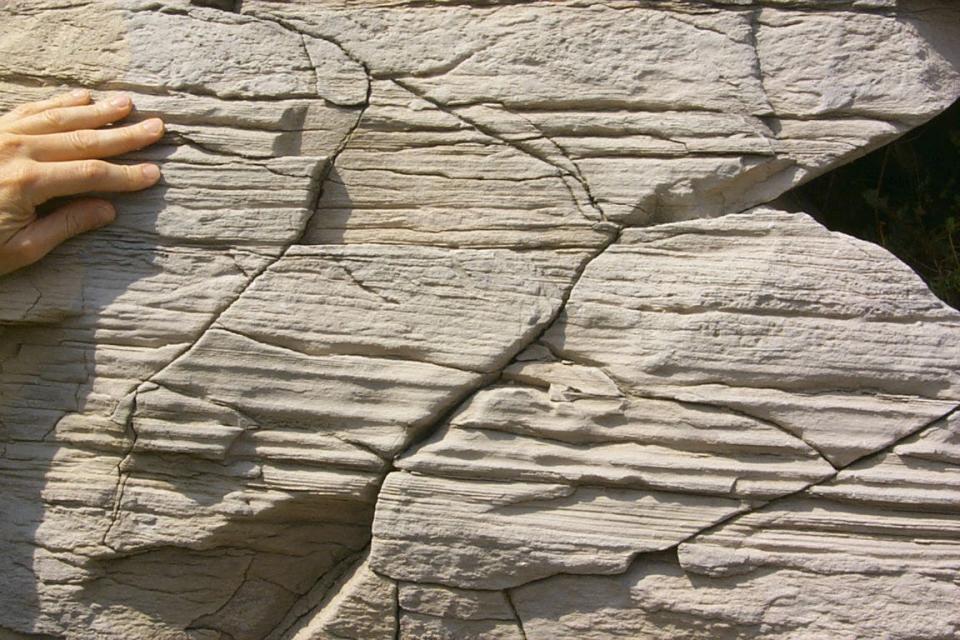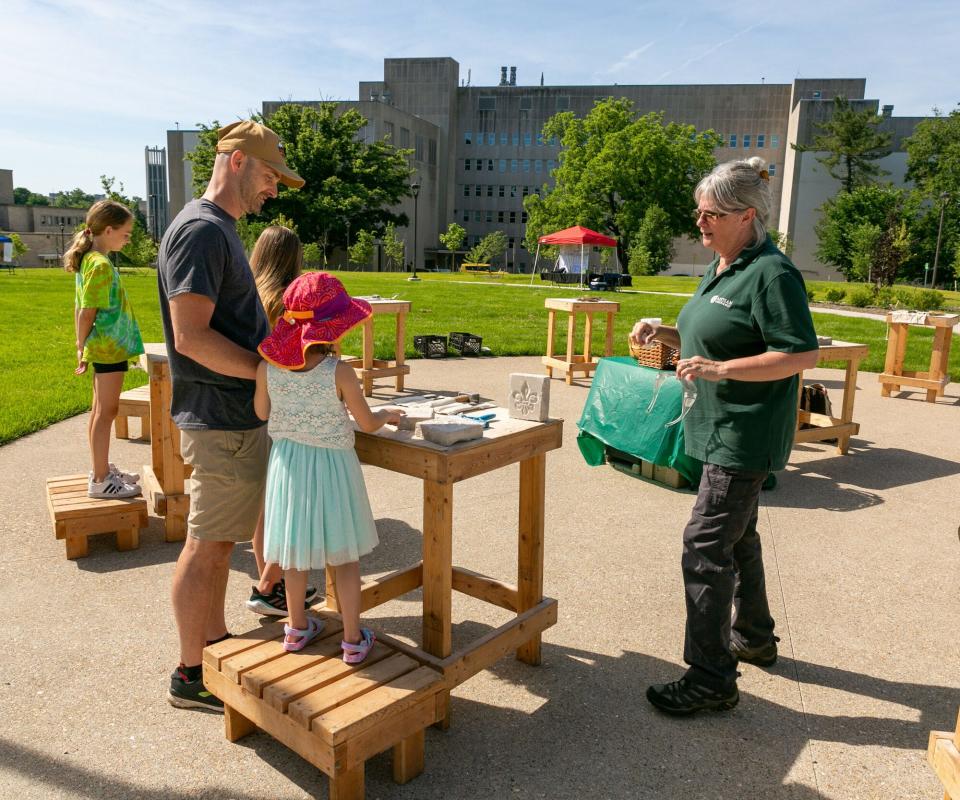Indiana Geological and Water Survey hosts Limestone Fest on IU Bloomington campus

From the steps of settlers’ cabins to the steeple of the National Cathedral, Indiana-quarried limestone is known nationwide as both a “workhorse of building stones” and a symbol of permanency. “You don’t put up a building with limestone to express anything but permanence,” said sculptor Dale Enochs in “Stories in Stone,” a book by David B. Williams which devotes a chapter to Bloomington’s stone industry.
“The Salem (limestone) isn’t a screaming, sexy material,” Enochs said. “It has humility. I liken it to Indiana. It’s part of us.”
It is also “The Nation’s Building Stone,” trademarked. And because of the stone’s history interbedding with local history, June in Monroe and Lawrence counties is heralded as Limestone Month.
The Indiana Geological and Water Survey (IGWS) will celebrate from 10 a.m. to 3 p.m. Saturday, June 17, at its second annual free, family-friendly Limestone Fest on the campus of Indiana University.
Coming soon: Emergency veterinary clinic opens soon in Bloomington. Here's all the details.
It’s Todd Schnatzmeyer’s job to celebrate Indiana limestone every day. He’s president of the Indiana Limestone Institute of America (ILIA), an agency which supports the limestone industry and promotes the advantages of using this stone in building projects.
Indiana limestone has been called Bedford Stone, Bloomington Stone, White River Stone, Bedford Marble, Gosport Stone, Indiana Oolitic Stone, Spergen Hill Limestone, and several others, but its geological name is Salem Limestone, after the Salem Limestone Formation which stretches from Owen County southeast to Harrison County on the Ohio River.

The ILIA is headquartered in the limestone-clad geology and geological survey building, on the mostly-limestone IU Bloomington campus. There are a lot of reasons why it’s a popular and sought-after building material, Schnatzmeyer said. “It's consistency, ease of fabrication, availability, and of course, as a natural stone, it has inherent fire resistance.”
Between 1835 and 1904, a series of major fires in large cities inspired new building codes and ushered in a limestone building boom. Many universities built in the late 1800s to mid-1900s — IU among them — chose limestone as canvases for Collegiate Gothic and Art Deco architecture.
Indiana limestone has been used structurally or decoratively on many monuments and iconic buildings — Grand Central Station, Ellis Island, and the Empire State Building in New York City; The Pentagon and the Lincoln Memorial in Washington, D.C.; and 27 U.S. state capitol buildings among them — that it’s no wonder it’s known as The Nation's Building Stone. In fact, its prominence led to Indiana leaders being accused of favoritism by senators from other stone-producing states. A federal law passed in 1915 had required post offices with gross receipts between $60,000 and $800,000 to be faced with sandstone or limestone, leading to more than 750 Salem-skinned post offices nationwide, Williams wrote.
On display: Artists' divergent styles converge in fiber show at the Vault Gallery
The first commercial limestone quarry in Indiana’s stone belt opened in 1827 in Stinesville. Indiana has been a leading producer of dimension stone ever since, ranking third among all states for tonnage produced, according to a 2022 U.S. Geological Survey report. Limestone sales from Monroe County were estimated at $3 million around 1911 and $175 million in 2011. The industry also attracted talented cutters and carvers from around the globe, helping to grow the area’s population in the early part of the 20th century.

While the building stone industry sees certain grades and colors of limestone to be most valuable, geologists often find the less homogeneous-looking stones to be the most fascinating. Limestone is composed of calcium carbonate, which came from skeletons and shells building up over the millions of years Indiana was covered by a shallow sea. “The limestone itself is essentially a death assemblage of bryozoans and echinoderms with a few other fossils thrown in,” said Todd Thompson, IGWS director, whose research over the past 30 years has been primarily in shoreline behavior. Standing inside a quarry, geologists can see a story in stone; they can point out where ancient sandbars existed and imagine what that environment looked like when it was alive and undulating.
“I like trying to figure out why the deposit is here and why it has the characteristics it does that makes it such a useful building stone,” Thompson said about his fascination with Salem Limestone. “And more recently, with the new saws they use in the industry, they essentially give me a polished outcrop and I get a chance to see features within the limestone that you would normally not see.”
From the industry perspective, Indiana limestone is still an important economic treasure. Its compressive strength is such that it can support bridges and buildings. It can be carved, turned, or planed into artwork. It’s a material that endures for generations, and if repairs or additions are ever needed, matching stone can be found. It’s also among the most cost-efficient of the natural building materials and requires little to no maintenance.
“Though only found in three small Hoosier counties, the supply is virtually limitless,” the ILIA says on its website, “and just like the projects built with the product, is expected to last for several hundred years, through many generations.”
Sara Clifford is managing editor of the Indiana Journal of Earth Sciences at the Indiana Geological and Water Survey, IU-Bloomington.
If you go
What: Limestone Fest
When: 10 a.m. to 3 p.m. Saturday, June 17
Where: Indiana Geological and Water Survey building (1001 E. 10th St.) and outdoors at the Northwest Quad (Forrest and Cottage Grove avenues) on the IU Bloomington campus
Who: IGWS staff and other outdoor- and history-related agencies like the Monroe County History Center, 500 Earth Sciences, Artisan Experience, Sycamore Land Trust, and many more
To do: Limestone carving, climbing wall, fossil crafts, cave critter exploration, historic preservation info, and more
Cost: Free
Other Limestone Month activities: https://www.visitbloomington.com/blog/post/limestone-month-calendar-of-events/

More about Limestone Fest
How do you carve limestone? Where are the best places to hike in the stone belt? How do caves form? Why are so many things built with limestone, and how important is that industry to this region? If you have any desire to know more about Indiana’s official state stone than you already think you do, local experts will fill you in at the Limestone Fest Saturday, June 17, from 10 a.m. to 3 p.m. Hosted by the Indiana Geological and Water Survey (IGWS), this free, family-friendly event is bringing together IGWS geologists and representatives from other science- and outdoor-related entities to celebrate Limestone Month in Indiana.
Activities will be set up mostly behind the IGWS office (1001 E. 10th St.) in the grassy Northwest Quad on Cottage Grove Avenue. Free parking is available in the neighboring Forrest Avenue garage. The IGWS’s Learning Lab, celebrating its one-year anniversary in June, also will be open on the first floor of the IGWS/Geological Sciences building. There, visitors can pull open drawers and handle thousands of rock, mineral, and fossil specimens that had been mostly inaccessible to the public before the Learning Lab was created.
Outside booths and activities at Limestone Fest will include:
IGWS scientists teaching about the fossils that make up limestone and the geology of Indiana’s stone belt; pointing out hiking attractions on topographic maps; and offering children’s crafts and games;
Bloomington Parks and Recreation displaying a karst water model and a 3-D-printed cave;
Sycamore Land Trust teaching about the geology of Monroe County nature preserves and unique flora that favor calcareous soils;
The Indiana Limestone Institute of America discussing how Indiana limestone is used in buildings;
Artisan Experience demonstrating basic carving techniques and tools and offering 6- by-6-inch limestone pieces to carve yourself ($25).
Visitors who stop by each booth will be eligible to win a prize.
This article originally appeared on The Herald-Times: Limestone Fest at IU Bloomington, a free, family-friendly event

